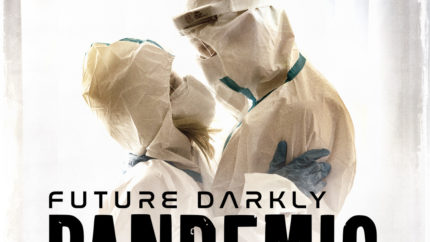
By Josiah Howard
(author of Blaxploitation Cinema: The Essential Reference Guide)
At one time the images were omnipresent: on TV, in movies, on billboards and in magazines. Young, hip, African-American men and women in anti-establishment starring film roles, wearing bell-bottoms, platforms and Afro hairstyles: determined to get even—or “get over.”
The time was the early seventies and the film genre was blaxploitation—action-oriented pictures that, for the most part, told stories culled from America’s abandoned and crumbling urban meccas. Be it in New York City, Chicago or South Central, Los Angeles, the genre revealed the plight of the unconsidered and unrecognized, the angry and newly militant. Gone were Hollywood’s entrenched black “supporting player” roles—maids, butlers, sidekicks, buffoons—in their place were a diverse group of sexy, unapologetically defiant name-above-the-title film stars.
1970’s black-cast comedy Cotton Comes to Harlem ignited the genre; tapping the shoulders of Hollywood’s decision makers and unequivocally proving that “black” films could turn a profit. Once that fact was established—most significantly with the following year’s blockbusters Shaft and Sweet Sweetback’s Baadasssss Song, the floodgates were open. From this point on, and for the next ten years (the genre’s heyday was 1972-76), stories whose focus was black lives, the black experience and black culture, were not only omnipresent, they were among America’s top money-making films. If one needs evidence; 1972’s Super Fly knocked The Godfather out of the No. 1 spot on Variety’s Top Grossing Films list!
The impact, effect and financial success of blaxploitation films didn’t come out of nowhere, inroads had been made in the 60s with low-budget, incendiary pictures like Nothing But a Man (1964), Up Tight (1968) and Riot (1969), but once the decade changed over all hell broke loose! The films came all at once and from everywhere. It wasn’t just newbie start-ups that financed, marketed and released the films, it was A-list Hollywood studios. MGM, Warner Bros., and Paramount released some of the era’s biggest box office bonanzas—Shaft, Super Fly and The Legend of Nigger Charley respectively—(yes, six films actually feature the N-word in the title!), while the independents, (Columbia, United Artists, American International) and ambitious newcomers, (Dimension, General Film Corp., Moonstone) filled in the blanks. Blaxploitation films played “downtown,” in suburban (white) malls, and at the Drive-In. Mexico, France, Italy and Brazil were just a few of the countries that vigorously imported the films making them an international success. The October 23, 1972 edition of Newsweek said it all. Behind a cover image of leather-clad Richard Rountree as John Shaft—pointing a pistol at the spectator—there appeared an eight-page expose: America was regaling, submerged and utterly fascinated by the country’s very first “black motion picture boom.”
“Black People were working, man! They were proud to see themselves up on the screen: it was empowering,” Fred Williamson recently told TV-1. Star of genre staples like Hammer (1972) and Black Caesar and Hell Up in Harlem (both 1973), blaxploitation films brought Williamson from the football fields into movie theaters, but he still had a problem with the word “blaxploitation.” “If there are ‘blaxploitation’ films why aren’t there ‘whitesploitation’ films? How is Death Wish any different than Shaft?”
It’s a good question. Several white-cast action films from the decade—Walking Tall, Mean Streets, Super Chick (all 1973), Big Bad Mama (1974) and Switchblade Sisters (1975) could all have been re-cast as “black” films with very little change in dialogue, script or location. To many, including Shaft Director Gordon Parks and Sweetback director Melvin Van Peebles, the term “blaxploitation” implied that African Americans were being exploited. Others begged to differ: journalists and film fans appreciated it as a spirited Black Power co-opting of the accepted low-budget film genre “exploitation”: a cool term that spoke directly to the largely black audiences that made the pictures a success.
To be sure, even at the time of their release, blaxploitation films were controversial and sparked serious debate. Many of the genre’s most popular entries—especially Super Fly (1972; the story of a cocaine dealer), Coffy (1973; the story of a vigilante murderess), and The Mack (1973; the story of a pimp), were denounced—most famously by Jesse Jackson, African American TV Mogul Tony Brown, and the NAACP (The National Association for the Advancement of Colored People) chapter head Junius Griffin. It’s Griffin, not the press, who coined the phrase “blaxploitation,” a derogatory term he hoped would shine a light on what he and others viewed as an exponentially growing collection of “negative” and stereotypical black film images.
Picketing outside of theaters was a part of the blaxploitation story; so were black-led boycotts and the formation of transient anti-blaxploitation organizations—CAB (Coalition Against Blaxploitation). But what the dissenters failed to recognize was the genre’s profound social commentary, unflinching honesty, and the healing effects of black escapism. Blaxploitation films weren’t merely illusory entertainments, they were unfiltered and unsanitized peeks into the working-class black man and woman’s real-life experience in America. It’s true that they were often “get whitey” wish-fulfillment and that they did, sometimes, trade in stereotypes (of both blacks and whites), but it was also true that they served a purpose: they provided an escape valve through which black impatience, frustration and anger could be constructively released.
And blaxploitation films were valuable on a lager front: they opened the door to behind-the-scenes African American participation in the film industry. Black writers, directors, sound technicians and cinematographers now had a chance to become a part of the industry’s heretofore exclusive unions. In 1973, for example, there were no African American stunt women working in the billion-dollar industry: none! That changed with the release of Jack Hill’s Coffy: the first Hollywood film that employed a black woman stunt double (previously white female stunt doubles were simply painted black). On the music front the pictures provided a forum in which black stars were incandescent. Isaac Hayes’ “Theme from Shaft” went to No. 1 and won a Grammy and an Oscar; Curtis Mayfield’s Super Fly soundtrack made more money than the film it was created for; and Marvin Gaye’s Trouble Man soundtrack expanded the artist’s already large socially aware platform. Add the fact that the films were fully endorsed by The Black Panther Party and it’s clear: the genre was not only popular, timely, and speaking directly to new audiences and their revised expectations; it also had the requisite cred!
Fifty years have passed since the release of Cotton Comes to Harlem and blaxploitation’s ongoing influence is incontestable. Homages proliferate; Black Dynamite (2009), BlacKkKlansman and the remake of Super Fly (both 2018), Dolemite Is My Name (2019); retrospectives keep theaters filled—the Black Then: Blaxploitation Cinema Turns Fifty! film festival in New York City (2020); and the full embrace of cable television: Bounce TV’s “Brown Sugar” and TV-1’s “Unsung” series. Be it action-adventure, westerns, dramas, biographies, karate, comedies, horror—Blacula (1972) was a fun-titled smash, or science fiction, there’s something in the blaxploitation cannon for everyone. There were even blaxploitation Adult films! Lialeh (1974) was heralded as the first “all-black” X-Rated picture. Funky music, cool fashions, anti-heroes and ghetto culture were as much a part of the story as was filmed sex acts.
“When I made pictures like ‘Foxy Brown’ and ‘Sheba Baby’ I wasn’t thinking about whether or not they would stand the test of time,” Pam Grier recently confided (Grier became a feminist hero; famously appearing on the cover of Ms. magazine). “I was just trying to pay the rent and do a good job. What I understand now is that I became popular because I was enacting truths: black truths that hadn’t been seen on the screen before.”
Maybe that’s the reason the films continue to resonate. Made on shoe-string budgets and filmed on America’s inner-city streets rather than on Hollywood sound stages, blaxploitation pictures, as fantastical as they sometimes were, often seemed equal parts salacious entertainment and straightforward documentary. “You know, I loved everything about the films,” Quentin Tarantino told The New York Times (Tarantino’s Jackie Brown [1997] stars his “hero” Pam Grier), and two-time Academy Award winner Denzel Washington has admitted that after seeing Super Fly he, “…like every other dude in the neighborhood went out and got that long leather maxi coat!”
Perhaps Super Fly’s bombastic, rhyming, advertising campaign best sums up blaxploitation’s colorful and enduring impact. Delivered in his trademark gravely voice, actor/voiceover artist Adolph Caesar sells the film—and the genre—in grand fashion. “He’s super hood, Super high, Super cool, Super Fly!” So are blaxploitation films!
About Josiah Howard

Josiah Howard is the author of four books including Blaxploitation Cinema: The Essential Reference Guide. A senior contributor at Furious Cinema and The Grindhouse Cinema Database, Howard also lectures on film and has curated festivals internationally. His writing credits include articles for The American Library of Congress, The New York Times and Reader’s Digest.


I love how Sweet Sally Mae incorporates the blacksploitation elements which makes it all that more interesting to watch. This is a very well researched article. Thanks for taking the time to go through and do this. I feel like I just attended a brief film seminar.